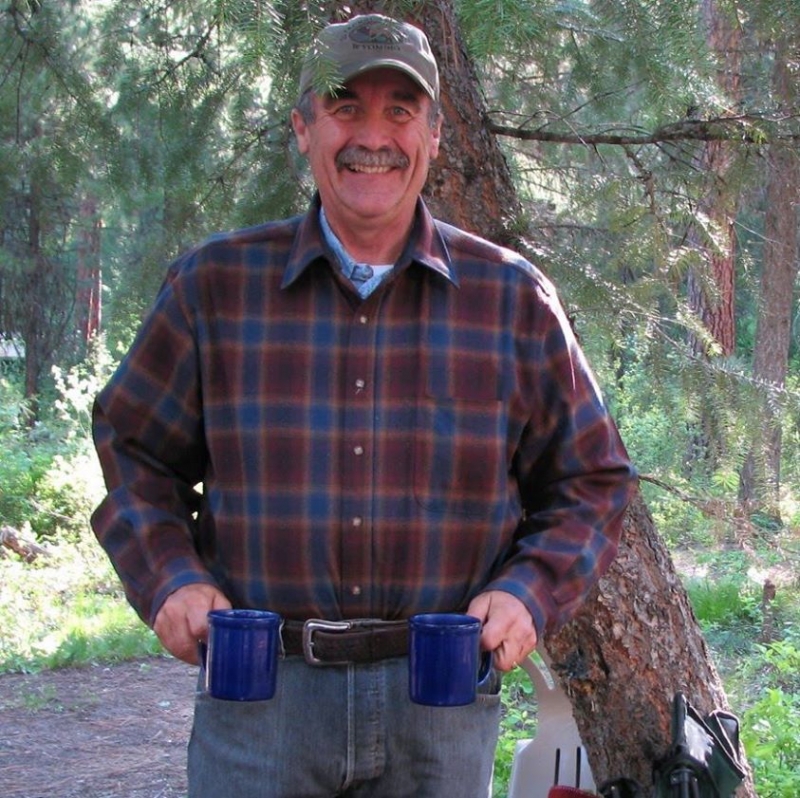The KiwiSDR 2 online store is open for orders! Please visit kiwisdr.nz
KA7U
About
- Username
- KA7U
- Joined
- Visits
- 3,402
- Last Active
- Roles
- Member
- Points
- 3
-
LZ1AQ LNA and a 1.2 meter copper loop antenna.
A report on the ongoing experimenting with the home brew ZL1AQ loop amplifier and the commercial version. I have now made a total of 6 LZ1AQ amplifiers, 3 using matched 2N2222 transistors and 3 using 2N5109 transistors. I've experimented with single loops and dual loops in orthogonal planes like the image in G8JNJ's post above. According to my observations of the noise floor using the KiwiSDR, the amps using the 2N5109 transistors exhibit a better noise floor by a considerable margin, over 10dBm on 160 meters and observably more on the lower frequencies. Generally, the entire 30 MHz band spread is noticeably improved with the 2N5109 transistors. The 2N2222 transistors I used had a typical HFE of 214.
The commercial version that I purchased has considerably more gain than the DIY model but once again it also has a higher noise floor and the additional gain has required notch filters to reduce local high powered stations, that the DIY boards don't require, as they have less gain. The commercial board is very sensitive at VLF and is very nice with many options that make it ideal for a wider variety of antenna configurations.
I have two problems with the boards currently available at https://easyeda.com/doxnairobi/zl1aq-loop-amp-ron-morell , I used the 2N2222 footprint and it makes it a bit tight to use the 2N5109, and if you use a RJ45 socket that accepts cords horizontal to the board, it will be incorrect, so use the RJ45 socket that plugs in from the top. I might get around to changing these two issues... It takes me about 4 hours to make the amp and the balun RJ45 to BNC board. https://easyeda.com/doxnairobi/2-1_balun , and again, I've got the RJ45 plug backwards if you use a horizontal plug. There is nothing stopping you from modifying these boards before having them produced. The last order was $2.00 for 10 boards + shipping and the parts I ordered. The parts weren't much either. Mostly it just takes time to figure out how to do it and wait for them to show up.
I've worked with 4 different amp designs and I think the LZ1AQ is quite competitive with the other designs. Thanks to G8JNJ for recommending it.
Ron
KA7U -
Using VAC and external programs for decoding data
-
Kiwirecorder 101
Dave,
The program suite is called Kiwiclient.
https://github.com/jks-prv/kiwiclient/tree/jks-v0.1
I use it to record when I'm not there, or to obtain an audio file for further uses. I was interested in DRM and would not stay up late or get up early to seek a DRM station. So I setup cron jobs to do the recordings and then listened to them later. Below is an example:
Now for a cron job to start and stop the recorder. I think I might manage that... Is there a way to specify the recording length time on this recorder?
So how to start and stop the kiwirecorder.py using crontab (ie. cron job)
add these commands in crontab:
ron@linux-4cdz:~> crontab -e
# DO NOT EDIT THIS FILE - edit the master and reinstall.
# (/tmp/crontab.JBGmN4 installed on Thu Nov 23 10:37:32 2017)
# (Cronie version 4.2)
# .---------------- minute (0 - 59)
# | .------------- hour (0 - 23)
# | | .---------- day of month (1 - 31)
# | | | .------- month (1 - 12) OR jan,feb,mar,apr ...
# | | | | .---- day of week (0 - 6) (Sunday=0 or 7) OR sun,mon,tue,wed,thu,fri,sat
# | | | | |
# * * * * * command to be executed
# * * * * * command --arg1 --arg2 file1 file2 2>&1
00 12 * * * python ~/kiwiclient-jks-v0.1/kiwirecorder.py -s southwest.ddns.net -p 8073 -f 5955.00 -m iq -L -5000 -H 5000
30 12 * * * for pid in $(ps -ef | awk '/python/ {print $2}'); do kill -9 $pid; done
I haven't used it for a while and have not checked for updates. So there may be new options or features not described in this limited example.
Ron - KA7U -
Any Ideas [AM BCB overload]
Suppose you want to notch 800KHz >10dBm. You could place a series LC circuit consisting of a 68pF capacitor and a 575uH inductor from the signal input lead to ground. A calculator to help with this determination is here: http://www.deephaven.co.uk/lc.html
You can buy parts at mouser.com and many other places. For example check out the part #143-10J12L on the data sheet located here:
https://www.mouser.com/datasheet/2/597/uni10-463412.pdf and the capacitor could be a ceramic disk like this one:
https://www.mouser.com/datasheet/2/427/dseries-371291.pdf
It is good to either use a variable inductor or a variable capacitor to help center the notch on the strong signal. You do this by adjusting the variable while observing the amplitude of the signal on the KiwiSDR and stop when it is at the lowest point.
You can change the values of inductance and capacitance to select parts that fit into your enclosure better. for example a 2000pF capacitor and a 20uH inductor. In this case you would probably wind the inductor on ferrite toroid and adjust the winding spacing or number of turns to find the inductance value. The capacitors will be +/- if they are fixed capacitors and it helps to have a LC meter to see what they are to get close to the resonant frequency.
Ron
KA7U -
TDoA Successes
-
TDoA Successes
-
Beautiful FAX image
-
Receive and Decode DGPS on 306 KHz
The KG software is working under wine on linux. I'm having trouble figuring out the buttons on KGFAX, but have it decoding the image. The buttons are ??? instead of text. Probably don't have a Japanese font in the WINE Font library. The KGdgps software is excellent and easy to use. Thanks for posting the links to the software.RonKA7U -
Running KiwiSDR from a headless browser
Peter,I have been working this out with Firefox in headless mode. The debug control takes developer tools. https://developer.mozilla.org/en-US/docs/Tools I have not installed them or tried them yet. The command line syntax is different, but the functions seem to be the same for the most part. Command line options are listed here. https://developer.mozilla.org/en-US/docs/Mozilla/Command_Line_OptionsCurrently I'm uploading spots using this command line syntax from Linux on my Chromebook.(trusty)ron@localhost:~$ firefox/firefox -headless -new-tab "http://ka7u.no-ip.org:8074/?ext=wspr,mf&mute" -new-tab "http://ka7u.no-ip.org:8074/?ext=wspr,40m&mute"*** You are running in headless mode.As you can see it takes more command input than the Chrome commands, but it works fine. I checked and the spots are uploading for MF and 40M. It is running in the background and a CTRL-C from the command line kills the process.Thanks for showing how to do this.RonKA7U -
Wideband pulsing noise & Noise Blanker absence: I'm in trouble! [NB added in v1.152]








